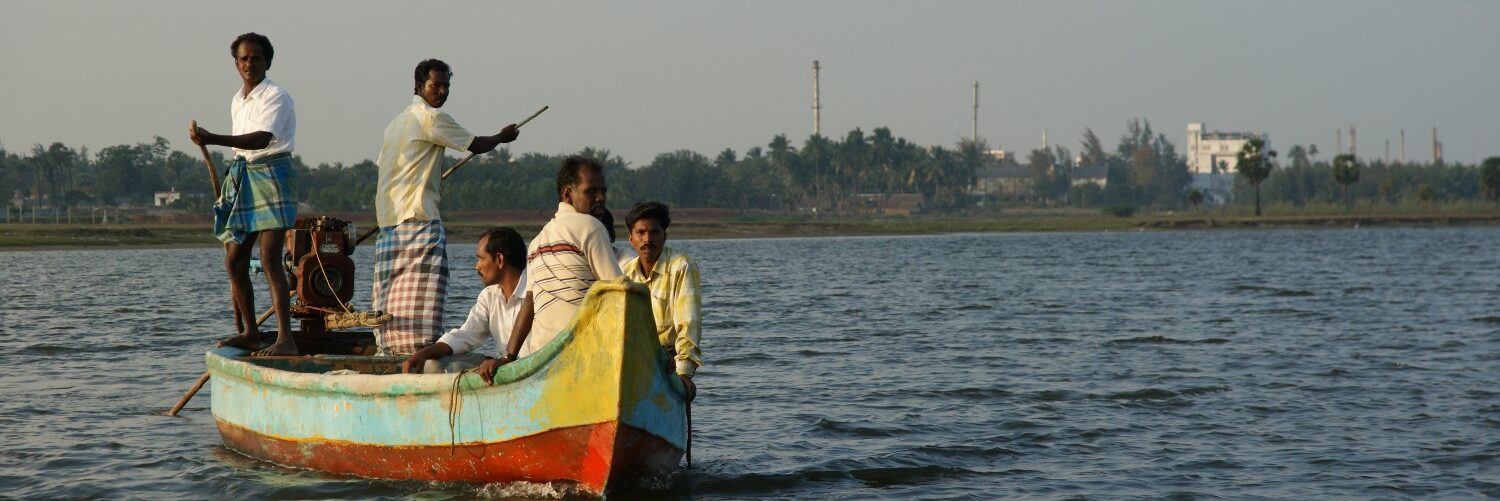SIPCOT Area Community Environmental Monitors
C/o 27 Abdul Khader Street, Manjakuppam, Cuddalore 607 001
PRESS RELEASE
Cuddalore, 23 July 2005: Ambient air in SIPCOT has dangerous levels of toxic gases, according to findings of an air quality study conducted by Shiva Analyticals (India) Ltd for the Cuddalore SIPCOT Industries Association (CSIA). The industry study tested for 21 toxic gases, in addition to standard parameters, in ambient air samples collected between 25 and 28 November, 2004 at 10 locations in and around SIPCOT. The tests confirmed the presence of at least 13 VOCs in the air out of which 8 VOCs are dangerously above the USEPA levels of concern.
Levels of chloroform were nearly 20,000 times higher than safe levels prescribed by US Environmental Protection Agency (US EPA) Region 6 standards. Acrylonitrile found in the sample on top of “Tagros Security-West room” exceeded Region 6 levels by a factor of 6008. 1,2-dichloroethane found in the sample from “Shasun Chemicals SW corner” was 194 times safe levels, and Trichloroethylene levels as far away as Sonnanchavadi exceeded safe levels by a factor of 1237. All four chemicals are known or suspected carcinogens.
Chloroform and Acetonitrile were found in 6 and 8 out of ten samples respectively. Eleven out of 13 chemicals found in the CSIA study are used as raw materials by SIPCOT industries, indicating the escape of these chemicals through fugitive emissions into the air breathed by SIPCOT residents. Six of the 13 chemicals found are potential human carcinogens, and confirmed animal carcinogens.
The study by SIPCOT industries confirm SACEM’s earlier studies that SIPCOT air is not fit to breathe. In September 2004 and May 2005, SACEM released two reports – “Gas Trouble” and “Gas Trouble II” – that found at least 24 chemicals including 20 volatile organic compounds (VOC) and 4 sulphur compounds. SACEM’s study tested for 69 VOCs and 20 sulphur compounds as opposed to CSIA’s study that only tested for 20 VOCs and 1 sulphur compound.
“We now have confirmation from the industry of the slow but sure poisoning of SIPCOT residents. Rather than reduce the pollution load and ease the suffering of SIPCOT residents, the Tamilnadu Pollution Control Board is busy doing secret deals to bring in Chemplast – a mega-polluter – despite the fact that Cuddalore rejected it during a public hearing in 2001,” SACEM said in a statement.
According to SACEM, CSIA’s study demonstrates the unscientific and baseless nature of allegations made by the TNPCB that SACEM’s findings are unreliable. Till date, the TNPCB has not conducted even one air quality test to confirm or negate the presence of VOCs in SIPCOT air.
India has no standards for toxic VOC and sulphur-based gases. In the absence of such standards, communities living alongside industries continue to be slow-poisoned by industries. In September 2004, the Supreme Court Monitoring Committee instructed the Central Pollution Control Board to develop such standards, and to use US EPA norms until the standards are developed. No progress is known to have been made on the standards setting process. Also, responding to the report, the Supreme Court Monitoring Committee directed the Tamilnadu Pollution Control Board to bring ambient air quality in line with USEPA norms by December 31, 2004. The TNPCB sought and obtained an extension till 30 June, 2005. TNPCB has reportedly commissioned NEERI to conduct a study of air quality in SIPCOT.
Read Industry Indicts Itself;
A Comment on Air Quality Analyses Conducted by SIPCOT Industries of Ambient Air in SIPCOT, July 2005
For more details, contact SACEM: 04142 230978
Visit www.sipcotcuddalore.com
